7 Tips to Help You Fight Climate Change With Your Home Garden
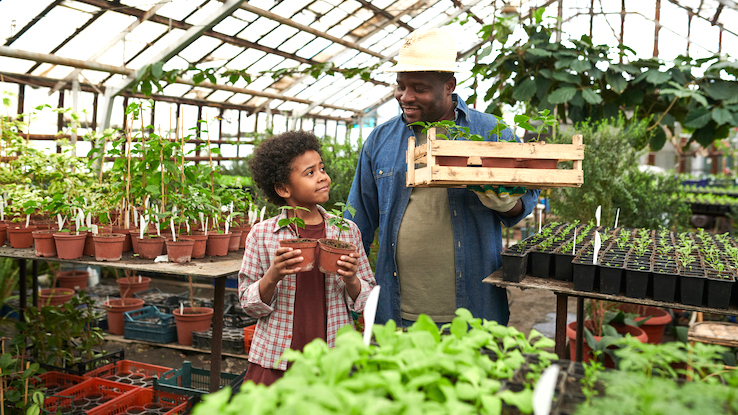
Climate change is one of the most defining issues of our time. It impacts nearly everyone and everything around the planet, from our personal health to the survival of animals and their ecosystems. Currently 70% of people in the U.S are worried about climate change, and over 50% feel helpless. While climate change presents an enormous challenge — one seemingly enormous enough that only equally large corporations, governments and budgets can fight it — the sum of all positive efforts is what can create the biggest difference. The steps we take as individuals do matter, but the time to take action is right now.
Fortunately, you can get started with these steps in your own yard. If you’re ready to join the fight in preventing climate change, you might need to get your hands dirty — but that’s a good thing. Adopting some new yardwork and gardening habits at home is a great way to make an impact. Here are some tips that can help you fight climate change in your own back yard.
How Your Home Garden Fights Climate Change
Having a home garden means that you’re in control of what goes into the soil and plants and that you can avoid using toxic pesticides and other chemicals that could leach into local waterways. If you decide to grow fruits and vegetables, you also limit demand for fresh produce that’s trucked around the country. And, that can result in fewer greenhouse gas emissions.
Your home garden increases green cover, which can improve the microclimate in your area. A few trees in several gardens collectively form a forest-like environment to provide natural shade, keep the air fresh and give wildlife more habitat options. But these are just a few of the overall benefits — you’ll learn about plenty more in the tips below.
Make and Use Your Own Compost
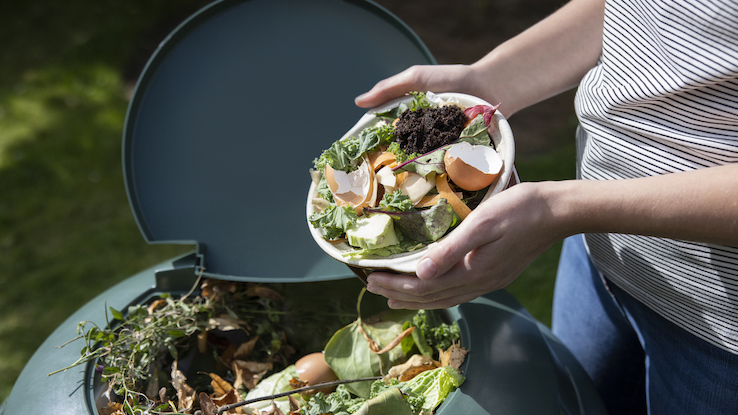
According to the EPA, more than 50% of municipal solid waste (MSW) — the everyday trash we throw out — in 2018 was organic waste, consisting of 21.59% food, 23.03% paper and paperboard, and 6.19% wood. Although organic waste naturally breaks down in an open-air environment, it doesn’t do so as easily in landfills and takes up valuable space. Additionally, landfill conditions cause organic waste to release methane, a more potent greenhouse gas than carbon dioxide that traps heat in the atmosphere and leads to global warming.
Home composting helps mitigate this issue by keeping organic waste products out of landfills. Compost your household organic waste, including vegetable peels and grass clippings after mowing, and use the soil to grow more food in your garden. Don’t be overzealous, though; not all organic waste is compostable. Things such as dairy products, meat and charcoal ash should never go into your compost bin.
Use Only Organic Fertilizers
Not able to compost? No worries. You can still amend your garden soil with healthy, organic ingredients instead of chemical fertilizers. Look for organic powdered blood meal and bone meal. This is finely ground bone that’s rich in calcium and phosphates, and flowering plants usually love formulations that incorporate these ingredients. Other organic fertilizer ingredients to look for include fish emulsion and bat guano, which also help with soil drainage.
Just make sure to follow all the usage instructions closely. One common misconception is that anything labeled “organic” or “natural” can’t be harmful. And that’s not the case with organic fertilizers; they can damage your plants if you’re not careful. For example, too much blood meal or fresh manure can burn plants.
Apply Organic Mulch — Properly
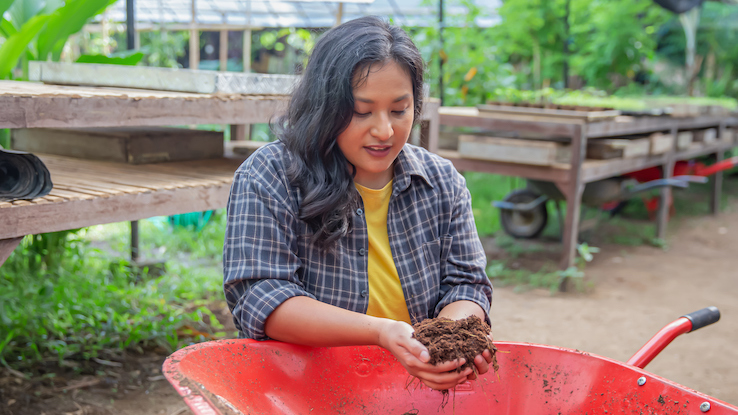
Did you know that not all mulch is organic? Inorganic mulch includes plastic sheeting, non-woven geotextiles and rubber chips that people spread across their yards. And you’ll want to avoid these. Organic mulch is the better option and includes grass clippings, sawdust, compost, bark chips, leaves and straw — most of which you can likely reuse right from your own yard. But how do you properly use mulch?
Mulching is mainly done to suppress weed growth and prevent moisture from evaporating out of soil too quickly, ensuring enough water is available to your plants in the process. So, the first step is weeding. Then, you’ll lay down about a 4-inch layer of mulch to discourage weeds growth. Spread the mulch to cover the soil surrounding the plants you want to protect, but not those plants themselves. Finally, water the mulch to help it stay in place. The organic mulch will later break down and turn to soil. You can spread mulch as needed; most people apply a new layer every five years or so.
Grow Native Plants
Growing plants reduces the amount of carbon in the air. But you can do even more good by planting species that naturally grow in your area. Why? First, you’ll be on the right side of the law. The Federal Noxious Weed Act and other state regulations ban the growth, sale, and distribution of certain invasive species — you definitely don’t want to include something illicit in your garden.
Second, and more importantly, you’ll help maintain biodiversity, which is vital for balancing healthy ecosystems and fighting climate change. Native plants have evolved to thrive in their natural areas, which means you’ll use fewer resources — like water, fertilizer and gas in your mower — to maintain them.
Opt for Long-Lived Trees and Shrubs
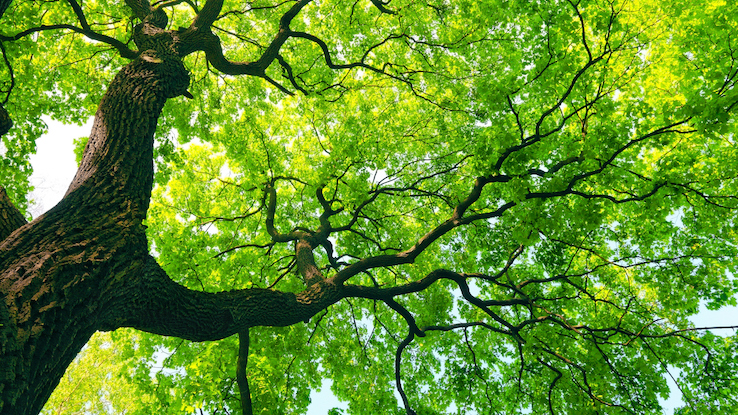
The older a tree or shrub is, the higher its ability to store carbon and slow down the effects of climate change are. However, research also shows that although old trees absorb more carbon, they sequester much slower than younger managed forests.
While it can take decades for trees to reach larger heights, the best time to plant them is right now to give them time to grow. Tall trees provide shade that can keep your home cooler and lessen your need for air conditioning, and they also create habitats for native wildlife. Additionally, trees can help filter rainwater, meaning groundwater is easier and less energy-intensive to treat and turn into tap water when it comes from tree-filled areas.
Grow Perennial Veggies and Herbs
A perennial plant lives longer than two years and experiences regular growth cycles each year. These are different from annual plants that only live for one season then die off. Perennial vegetables and herbs are better suited for your home garden because you won’t need to purchase new plants each year. They’re also great for fighting climate change because they can capture and store carbon emissions in their roots, ultimately removing the gasses from the atmosphere.
There’s a long list of perennial herbs and vegetables to choose from, and their suitability for your home garden depends on your location. Talk to an expert at your local garden center for advice on the best perennials to consider for your home.
Consider Unlawning
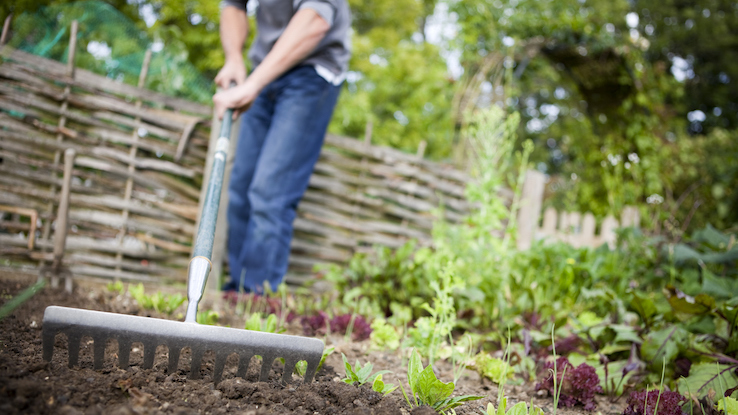
We all know the old saying about the grass being greener on the other side — and we want to be on that greener side. Lawns represent a lot of aspirational qualities, and they’re great places for kids and pets to play. But while they look beautiful, the tools we use to maintain them emit exhaust gasses that harm the environment. You can switch to push lawn mowers and other manual tools to remedy this — or, better yet, you can “unlawn.”
Unlawning is the practice of reducing the size of your lawn by planting more wildflowers, shrubs and meadow grasses while reducing the square footage of grass in your yard. Not only do you mow less (and use less fuel), but you also increase the biodiversity of your home. You’ll attract beautiful butterflies, bees, other insects and birds, and you won’t use as much water maintaining your yard.





